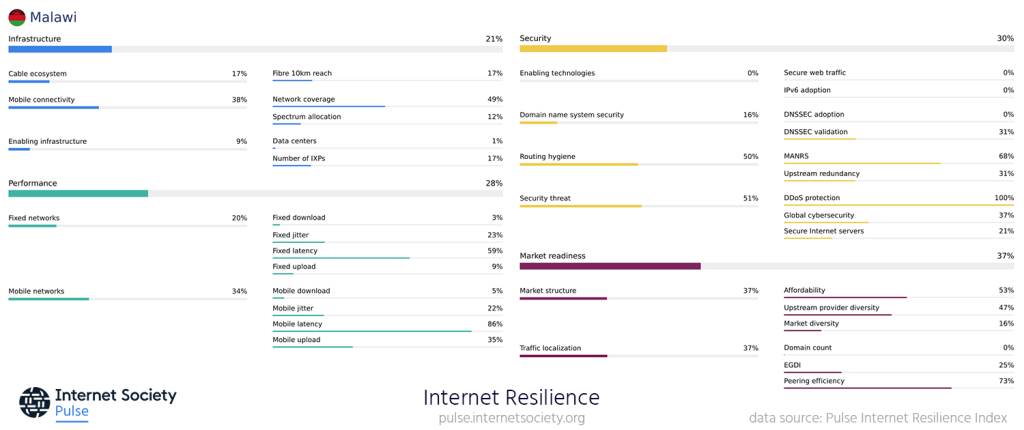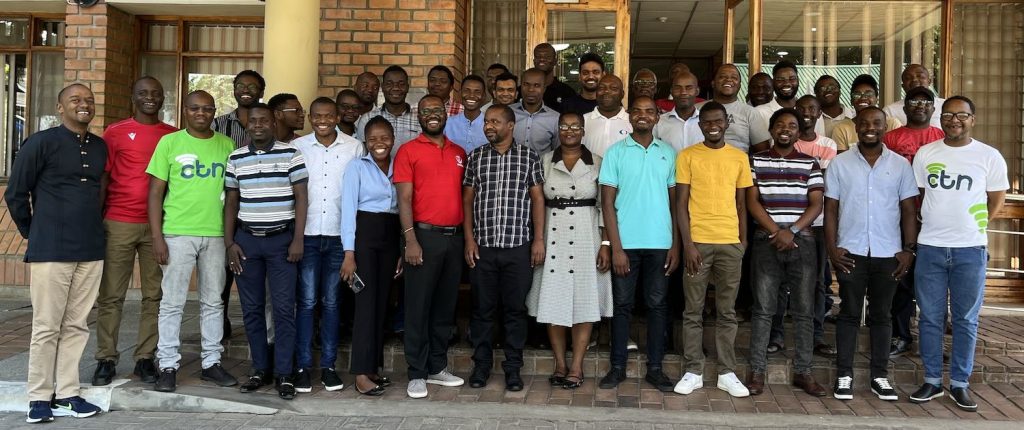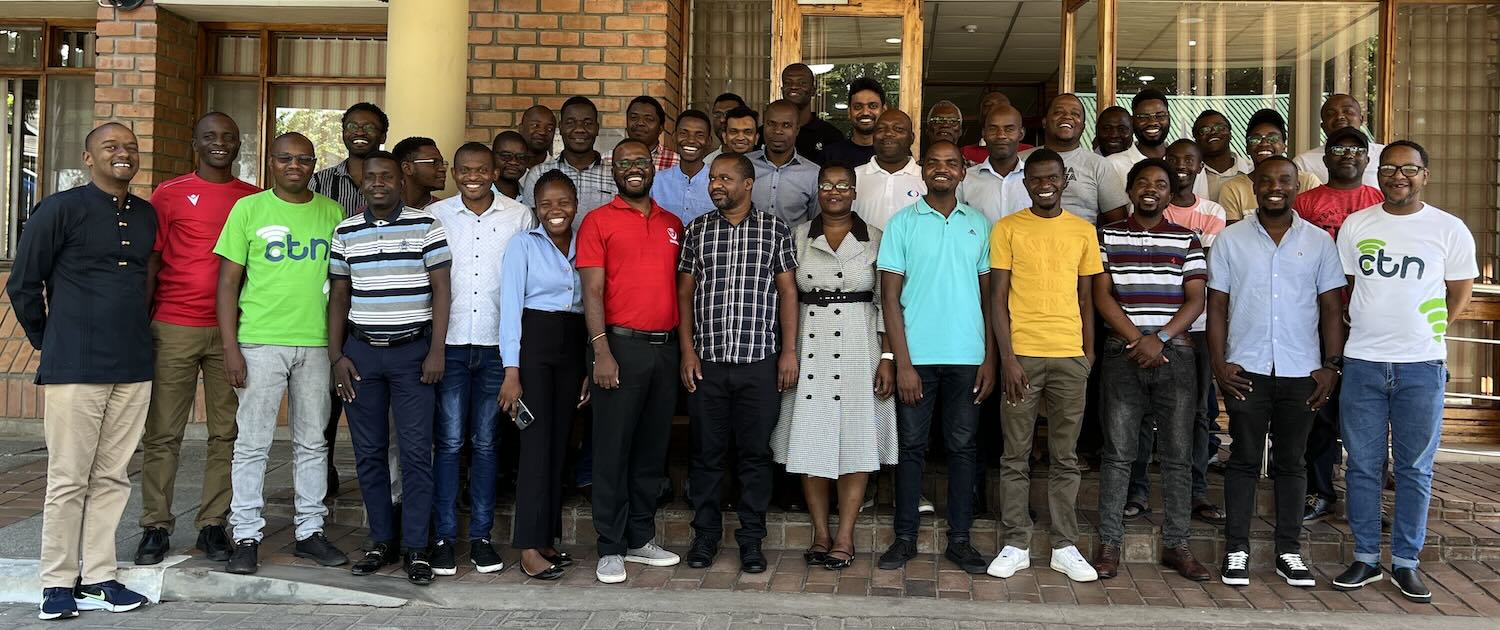There’s a case that making the Internet more affordable will increase usage.
For example, when mobile operator Reliance Jio started in India in 2016, it offered free data plans for a year to attract new customers. This strategy not only helped it claim the mantle of top mobile provider in the country within three years of its 2016 launch but also increased Internet usage in India from 16.5% in 2016 to 43.4% by the end of 2020.
While the Eastern African country of Malawi is not on the same level as India, its government and donors are hoping that a recent initiative to offer free Internet will encourage the three-quarters of its 20.5 million population who don’t currently use the Internet to try it and subscribe to an Internet plan that is among the most affordable in Africa (1GB at US$0.38).
However, price is only one factor—notably a significant factor when you live in one of the poorest countries in the world—that customers consider when buying anything. Quality often makes customers keep using the product and recommending it to others.
Judging by its Pulse Internet Resilience Index (IRI) profile (Figure 1), Malawi needs to overcome several challenges to address this.

“Malawi’s [Internet resilience] indicators are similar to those of countries that are currently or have suffered from prolonged internal conflict, but Malawi has never had even a day of conflict,” said Brian Longwe, CEO of CTN Broadband, a Malawian ISP.
“The underlying issues are principally related to infrastructure, or the lack thereof, as well as insufficient or non-existent competition in key areas such as long-distance and metro backhaul,” he adds, an opinion shared by others.
All of these factors are apparent in Malawi’s IRI profile, with overall infrastructure resilience (21%), market diversity (17%), and upstream redundancy (31%) all scoring low.
Other areas that Malawi needs to address are its low to non-existent:
- Fiber and mobile coverage (17% and 49% respectively).
- Mobile spectrum allocation (12%) —a higher percentage indicates greater retail diversity, which can further improve affordability and quality through competition.
- Mobile and fixed broadband performance measurements, particularly download and upload speeds, which rank among the worst in the world.
- IPv6 adoption (5%) is essential for sustaining Internet growth.
- DNSSEC adoption by its local country-code Top-Level Domain (ccTLD) registry.
- Use of DNSSEC validation (34%).
- Local domains registered at its local ccTLD registry (0%).
- The number of Internet exchange points (IXPs), which reduces latency and costs related to routing local traffic.
Community Critical to Overcoming Challenges
Brian and 40 other local technical Internet advocates discussed these resilience challenges and solutions to overcome them at the 3-day Malawi Internet Development Workshop, organized by the Internet Society, the Malawi Internet Service Providers’ Association (MISPA), the Internet Corporation for Assigned Names and Numbers (ICANN), and Packet Clearing House (PCH).

According to Brian, the workshop helped identify and validate these challenges and the “need for a vibrant and engaged local technical community that can frequently meet to discuss best practices, share knowledge, and learn from external experts and each other” to overcome them.
In relation to this, an unexpected but long-coming outcome from the workshop was the forming of Malawi Network Operators’ Group (MwNOG) and renewed discussions about forming an Internet Society Malawi Chapter. The fruits of these community development groups helped 13 African countries reconnect international connectivity last month following an outage to four submarine cables off the west coast of Africa.
Continued Public-Private Initiatives and Support are Essential
Ultimately, like most countries with low Internet penetration and quality, these challenges are not unique to the ICT or Internet sector but cut across many other industries.
Malawi is one of the poorest countries in the world, ranked 172 out of 192 on the Human Development Index. Eighty percent of its population is dependent on agriculture. This over-dependence, combined with a rapidly growing population that has doubled since 2000, has significantly exposed Malawi’s economy to the risks of global events such as COVID-19 and climate change.
Initiatives such as the Digital Malawi Project (2017—2024) indicate that the Malawi government and funders understand the need to invest in other areas to reduce this dependency and subsequent risk. So far, the project has assisted with:
- Improving Internet affordability and accessibility, including providing free Internet access via public institutions.
- Constructing the country’s first national data center.
- Training more than 16,000 youths, women, and the elderly in digital skills.
- Providing high-speed broadband connectivity to over 500 government and public areas, including hospitals and primary and secondary schools nationwide.
Another new project supported by the Internet Society through the Coalition for Digital Africa is also working towards establishing a second IXP to be located in the country’s second-largest city, Blantyre.
Brian admits these and other initiatives, including new terrestrial-border cable crossings with Mozambique, Tanzania, and Zambia and the community-led ‘Data Must Fall’ campaigns that originated in Southern Africa, have led to the cost of International connectivity in Malawi drastically decreasing in the past five years. But, these initiatives and support need to continue.
”[International connectivity] is still higher relative to neighboring countries, but the downward trend is encouraging,” says Brian.
“For poor countries like Malawi, extracting maximum value from telecoms investments through a policy stance that promotes, enforces, and implements as much infrastructure sharing (at reasonable rates) would allow for more competition, greater reach, and more citizens connected and services delivered.”


